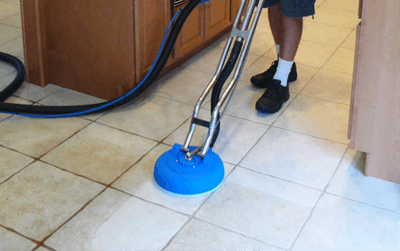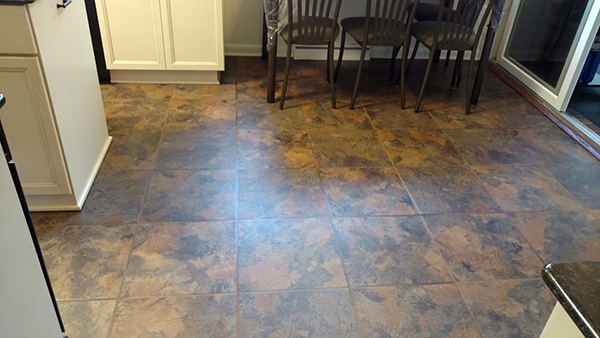Bamboo Flooring Review: Pros and Cons
Bamboo Flooring Review: Pros and Cons
Blog Article
Just about every person will have their own perception with regards to How to Care for Vinyl Flooring?.

Bamboo flooring is well-known for several home owners as a result of its advantages. It is durable and offered in different shades, from light blond to rich espresso. Likewise, it can be subject to tarnishing to match any type of decoration. Hence it has come to be the significant choiced flooring for service and property owners whenever there is requirement for sustainability.
Nevertheless, bamboo just like timber, is vulnerable to damages and cracking when humidity degrees rise and fall.
So are you considering bamboo flooring for your residence? Count on your own fortunate due to the fact that this article will certainly reveal you every little thing you need to understand. We will certainly discuss its attributes to take into consideration. We will likewise discuss the different kinds of bamboo flooring readily available on the marketplace. Maintain analysis!
Types of Bamboo Flooring
There are 3 basic options: strand-woven, vertical, and horizontal. House owners can select which type of bamboo flooring to acquire based on their traits. The purchaser's desired aesthetic effects the selected Bamboo flooring type.
Engineered Bamboo Flooring
Both strong and engineered bamboo flooring alternatives are offered. When the bamboo timber fits, it isn't easy to compare them.
Their differences are due to their making. As an example, engineered bamboo timber has a slim plywood support.
But, whether crafted or solid, bamboo flooring is tough, resistant, and appealing.
Engineered bamboo flooring utilizes the drifting wood flooring over a thin foam base. They might also be in the type of wide slabs. They are available in sizes up to 19 centimeters.
Solid - Horizontal Bamboo Flooring
You will observe that this kind is practically the same as upright bamboo flooring. It has a mild variation. Straight bamboo is among the most prominent kinds of bamboo flooring.
It is made by drying out significant strips of bamboo, cutting these bigger pieces into thinner strips, and then gluing them to develop slabs. The boards will after that be subject to pressure and also warm to guarantee they are well fastened.
All-natural bamboo has a lighter shade. While carbonized bamboo will be much less difficult than normal bamboo, if you require a darker shade, it might do you good.
Strand Woven Bamboo Flooring
Shredding the bamboo to draw out the fibers is among the extra luring steps in creating strand-woven bamboo floorings.
The bamboo fiber is usually combined with an adhesive after it's made to a pulp. The material is then knitted as well as compressed under fantastic warm, as the name suggests.
After making vertical and also horizontal bamboo, the strips serve to develop strand woven bamboo. The eco-conscious purchaser may find this function appealing. The reason is that it makes sure that the entire bamboo stalk creates very little waste.
Solid - Vertical Bamboo Flooring
Slim strips of completely dry bamboo timber glued vertically as well as pressed utilizing high heat and also stress produce this sort of bamboo flooring.
The thinnest side of the bamboo planks will certainly be in a vertical type. Then, a company bonding, pushing, and lamination will certainly follow. Due to their approach of signing up with, the bamboo strips feature a slim grain pattern.
The good thing regarding this type of bamboo flooring is that it is durable and also really affordable. Likewise, it provides a elegant and classy floor finish. However it is not widely available.
Attributes And What to Bear in mind When Picking Bamboo Flooring
With a multi-layered covering, bamboo flooring will certainly be rather durable. Keep in mind that future touch-ups may need a more competent flooring specialist.
Using your surface will certainly make matching fixings simpler once set up in your residence. The finish will certainly not last as long as factory finishes.
Other than that, here are some exciting features of bamboo flooring.
Eco-Conscious
This flooring originates from an all-natural plant called the bamboo plant. So when compared to other tree species utilized to make hardwood flooring, bamboo expands even more and quicker.
Inexpensive Maintenance
You can keep bamboo flooring in good condition by cleaning as well as damp wiping. So regardless of being extra vulnerable to scratches, bamboo flooring is very straightforward to keep.
You may obtain bamboo floors that are like brand-new by sanding them down as well as applying a fresh layer of paint.
Resilient
Bamboo flooring is not developed equal. There are lots of types of bamboo, and the different techniques used to turn it right into planks influence its longevity.
Bamboo, like wood flooring, can end up being vulnerable to use and also tear over time. Likewise, scratching, fracturing, as well as various other deterioration might happen. You can also sand some bamboo to appear like hardwood, however not all.
Bottom Line
It's basic to recognize why bamboo flooring has actually become more well-liked nowadays. For almost any kind of house, bamboo provides numerous solid as well as audio solutions for the atmosphere. Bamboo flooring might be the ideal option for upgrading your flooring.
We will likewise discuss the different kinds of bamboo flooring available on the market. Homeowners can choose which type of bamboo flooring to acquire based on their traits. Horizontal bamboo is one of the most popular types of bamboo flooring.
While carbonized bamboo will be less hard than normal bamboo, if you need a darker shade, it might do you excellent. After making horizontal as well as upright bamboo, the strips serve to develop strand woven bamboo.
Bamboo Flooring
Manufacture of Bamboo Flooring
Stranded bamboo is made by shredding the bamboo stalks into small strands, which are compressed into sheets using heat and resin binders, then cut into planks to use as building materials. This form of flooring is available both as tongue-and-groove planks that are nailed down, as well as planks that float over the underlayment. This is a premium form of bamboo flooring, available in many colors.
Horizontal bamboo flooring is manufactured by cutting the strands into thin strips which are then glued together to form planks. This type of flooring has a "grain," since the long stalk fibers are visible in the flooring. This type of bamboo is not as hard or durable as stranded bamboo, but it can have a very striking appearance. It, too, is available both in nail-down planks and as floating floor planks.
Engineered bamboo flooring is made by bonding a thin layer of bamboo onto a plywood or MDF core. This flooring is comparable to engineered hardwood and is installed in the same way—usually with click-lock planks that float over a foam underlayment. It is the least expensive (and least durable) form of bamboo flooring, and it cannot be refinished.
Unless it is stained, most bamboo flooring has a natural blonde or amber color that resembles unfinished maple or birch, but darker tones are available through a process called carbonizing, which entails subjecting the planks to high temperatures. While the color can be very attractive, carbonized bamboo is softer than uncarbonized forms, and is more susceptible to scratching.
Eco-Friendliness
Environmentally conscious consumers are often drawn to bamboo as a wholly renewable resource. Unlike the hardwood lumber industry, where trees can take decades to mature, bamboo stalks grow so fast that there is little environmental liability to the harvest practices. Moreover, bamboo stalks that are cut simply continue to grow and replenish themselves so that they can be harvested.
But the manufacturing process creates other environmental concerns. Bamboo floor planks are manufactured by slicing or shredding the stalks of bamboo grass plants and then compressing the pulp back together using heat, pressure, and a resin-based adhesive identical to those used in many other flooring products. This adhesive often contains urea-formaldehyde that can outgas into the air.1
The level of adhesive used and the amount of toxins emitted will vary, depending on how the bamboo planks are manufactured. Cheaper products may contain more formaldehyde, while more expensive products may use alternative materials in the resins. The amount of formaldehyde used in bamboo flooring is similar to that found in engineered hardwood flooring or MDF sheathing, and it tends to be a problem only for sensitive individuals.2 But if this concerns you, look for bamboo products labeled as formaldehyde-free.
Bamboo Flooring Cost
This material is priced at about the same level as most hardwood floors. You can find bamboo flooring products ranging from about $2 to $8 per square foot, with a national average of $3.84 per square foot. Installation costs for bamboo flooring are much the same as for hardwood flooring. On average, figure on adding about $4 per square foot for installation labor in addition to the cost of materials. You should be able to get a good-quality bamboo installed for less than $10 per square foot, including materials and labor.
https://www.thespruce.com/benefits-and-drawbacks-of-bamboo-floors-1314694

As an enthusiastic reader about How to clean and maintain vinyl flooring, I assumed sharing that article was a great idea. Do you know about somebody else who is looking into the topic? Feel free to promote it. I treasure reading our article about How to Care for Vinyl Flooring?.
Report this page